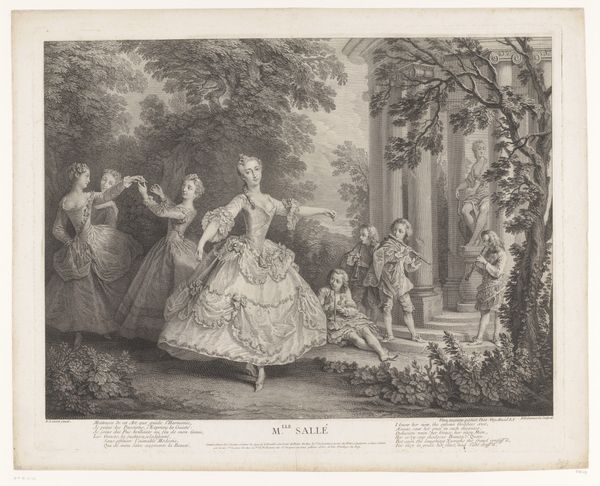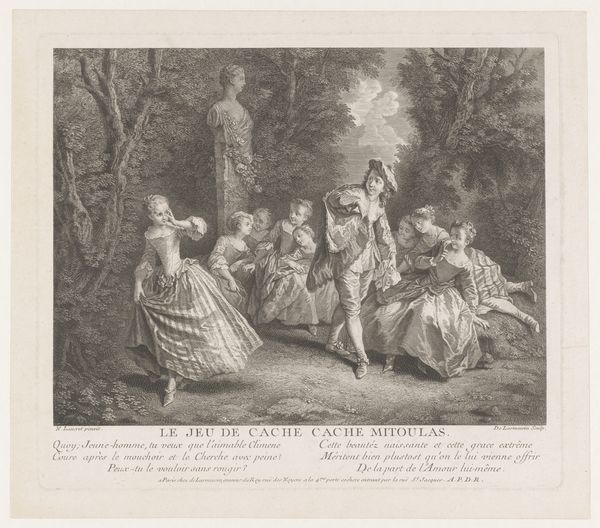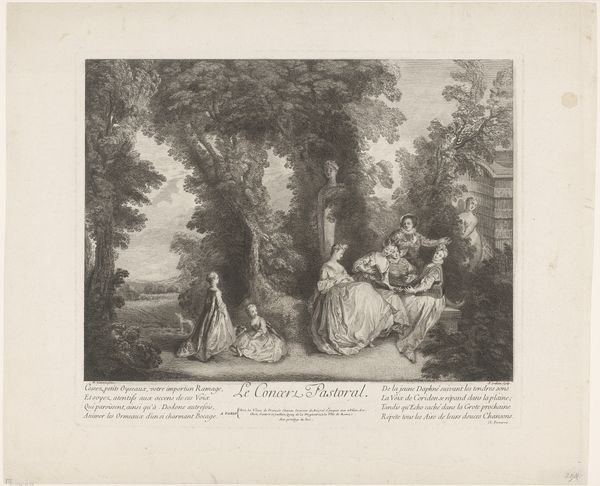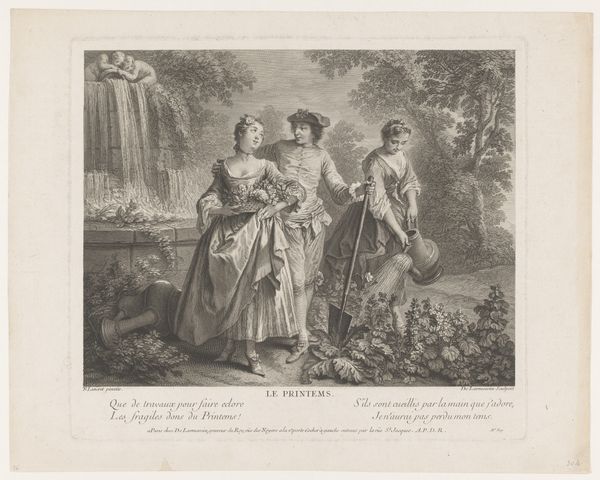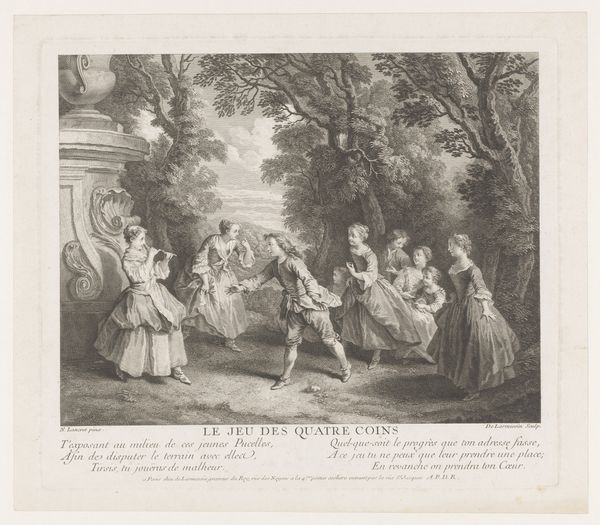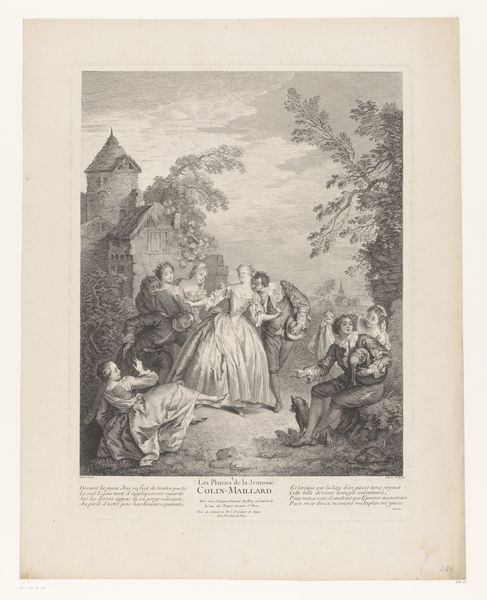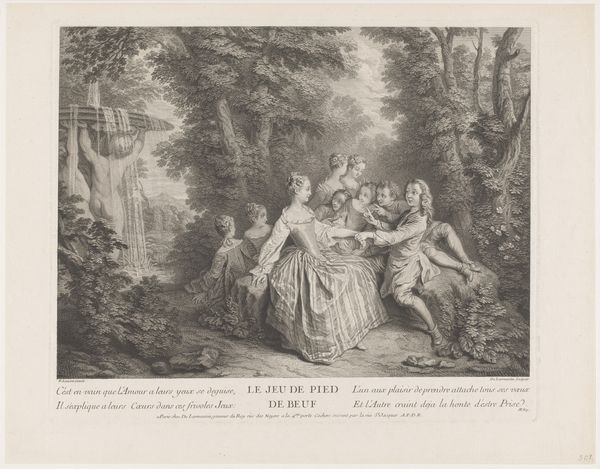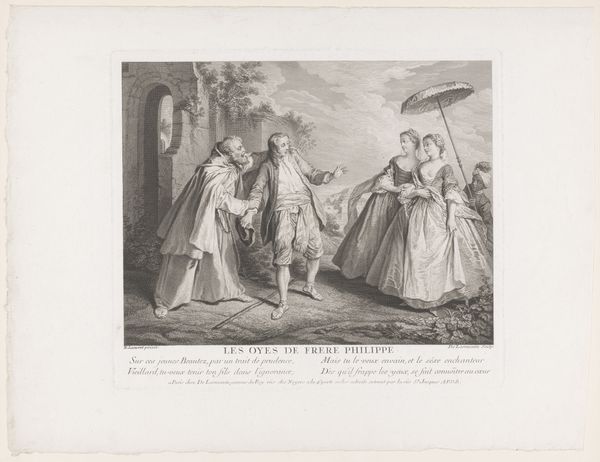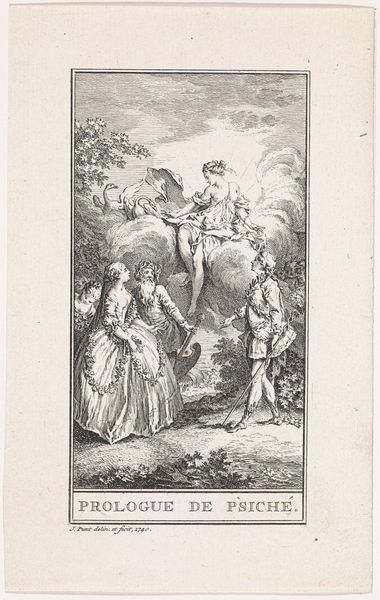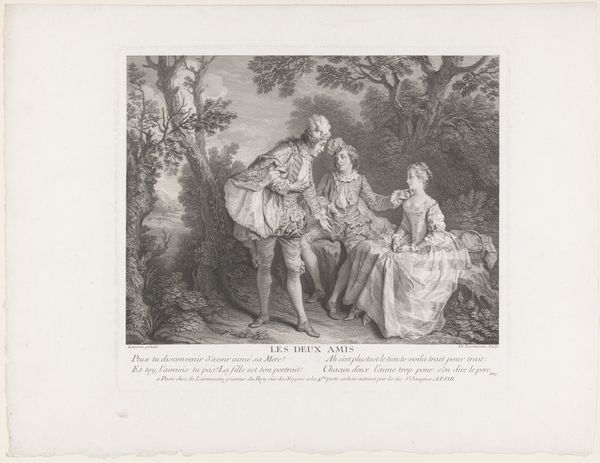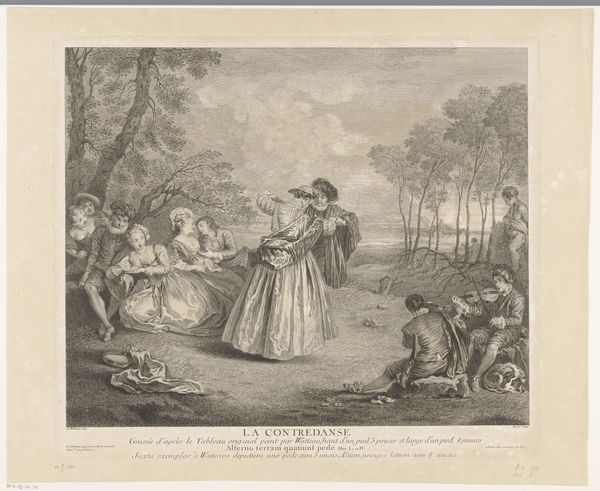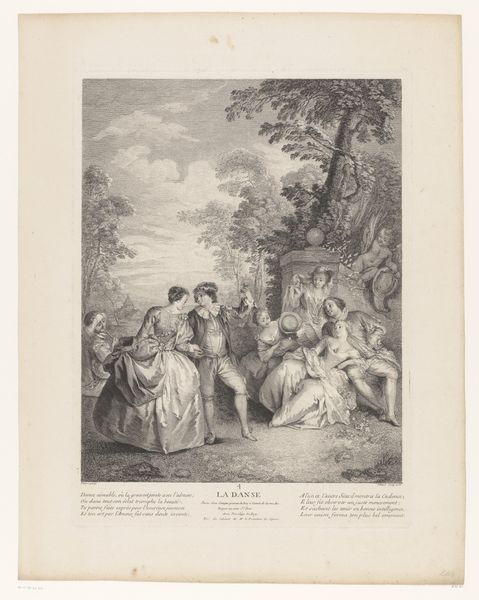
engraving
#
portrait
#
baroque
#
old engraving style
#
landscape
#
genre-painting
#
academic-art
#
engraving
Dimensions: height 457 mm, width 575 mm
Copyright: Rijks Museum: Open Domain
Curator: It feels like a celebration of movement, all captured in monochromatic stillness. Editor: Indeed! What we're looking at is "Portret van een dansende Marie Camargo," an engraving executed in 1731 by Laurent Cars after Nicolas Lancret. Let's delve into how the medium of engraving enhances its effect. Curator: And looking closely at the staging of Marie Camargo dancing "en plein air" is revealing; this composition, ostensibly captured in public, highlights a complex narrative concerning visibility, gender, and performance. Is she really as free and unfettered as the Romantic gaze allows us to believe? Editor: I'm particularly drawn to the textures that Cars was able to coax from the copperplate. Notice how he simulates the shimmering silk of Camargo’s dress versus the rougher bark of the trees—all with simple lines. The labour-intensive process mirrors the costuming of this popular dancer, doesn’t it? It is excessive! Curator: Precisely! The emphasis on detail speaks volumes about the societal pressures and expectations placed on female performers at that time. Camargo’s performance isn't merely dance but also embodies status and class, reflecting the aristocratic gaze. It’s the intersection of visibility and vulnerability within a strict social structure that captivates. Editor: But consider also, isn't that inherent labor a way for engravers to exhibit skill through accessible media? This engraving allowed for the mass dissemination of Camargo’s image, in a very modern way – it allowed a broader audience to understand new forms of dance. I am also curious if that dress can actually handle all that movement? Curator: It does feel like it presages celebrity culture. Still, it is imperative to consider power dynamics – how the gaze and access are always intertwined with gender and class. While technological reproduction grants some autonomy to its subject, it remains enmeshed in older conventions of depiction. Editor: Thank you, that shifts the whole dynamic here. Thinking about Cars, Camargo, and all the print consumers involved makes this more of a story than just an artwork, right? Curator: Absolutely. Examining these artworks necessitates analyzing not only aesthetics but their historical circumstances, so we are empowered with informed awareness and a refined understanding of these cultural products.
Comments
No comments
Be the first to comment and join the conversation on the ultimate creative platform.

